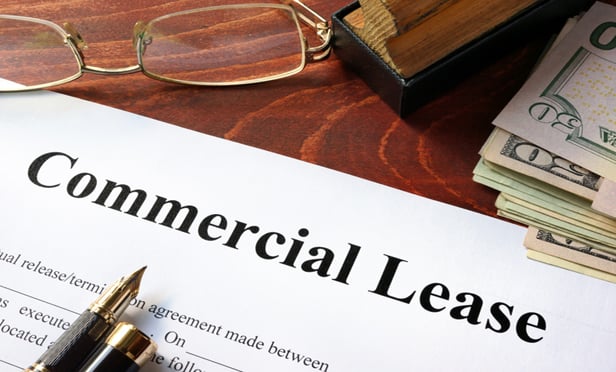Features

What Rights Does Commercial Subtenant Have In Security Deposit When Landlord Files for Bankruptcy?
Section 365 of the Bankruptcy Code, which governs the disposition of executory contracts, has specific provisions regarding the disposition of commercial real estate leases in bankruptcy, including the rights of a tenant to remain in possession of the leased premises when the landlord files a bankruptcy case and rejects the lease. But what rights does a tenant have with regard to the security deposit delivered by the tenant to the landlord?
Columns & Departments

Landlord & Tenant Law
Rent Obligations of Successor Tenant to Rent-Controlled Apartment Commences At Prior Tenant's Death Landlord Not Entitled to Attorneys' Fees Incurred In Defending Unsuccessful Class Action
Columns & Departments

Fresh Filings
A look at moves among attorneys, law firms, companies and other players in entertainment law.
Features

Appellate Review of a Bankruptcy Court's Preliminary Injunction
A bankruptcy court preliminary injunction should be reviewable as of right because of Supreme Court precedent, the rulings of other courts and common sense.
Columns & Departments

Real Property Law
Administrator's Deed Divested Distributees of Ownership Interest No Rescission of Deed When Mistake Was Not Mutual Restrictive Covenant Did Not Bar Educational Use Issues of Fact About Mortgagee's Knowledge of Fraud Precludes Summary Judgment No Private Right of Action to Enforce Food Cart Regulations
Features

Mass. Appeals Court: Accelerating Rent As Liquidated Damages Unenforceable
The Massachusetts Appeals Court recently reversed a judgment in favor of a landlord in a tenant default matter, finding that a provision of a commercial lease that accelerated the remaining rent as liquidated damages is unenforceable as a penalty. The opinion "brings uncertainty to thousands of existing commercial lease agreements."
Features

Second Circuit Orders Refund of Unconstitutional Quarterly Fee Overpayment
Many practitioners have been speculating as to how courts will address the potential remedy for the unconstitutional U.S. trustee fees imposed against Chapter 11 debtors pending in U.S. trustee districts under the 2017 amendment to 28 U.S.C. Section 1930.
Features

Yes, There Were Non-COVID Commercial Lease Decisions During the Pandemic
In the past two years, in litigations between commercial landlords and commercial tenants, appellate courts continued to issue decisions on topics, unrelated to COVID questions, that should interest all real estate attorneys and their clients.
Columns & Departments

Co-ops and Condominiums
Absence of Itemized Statement Did Not Justify Cancellation of Co-Op Corporation's Liens Jury Trial Waiver Enforced Statute of Frauds Prevents Enforcement of Gift of Co-Op Shares Mitchell-Lama Occupant Successor Occupant Entitled to Injunction Tolling Exclusive Purchaser Period
Features

What's In Store for Bankruptcy In 2023?
Practitioners Weigh In If anyone was holding out hope for a tidal wave of corporate bankruptcies in 2022, it's time to abandon ship. If that was part of your 2023 budget, don't get on the ship altogether.
Need Help?
- Prefer an IP authenticated environment? Request a transition or call 800-756-8993.
- Need other assistance? email Customer Service or call 1-877-256-2472.
MOST POPULAR STORIES
- The DOJ's Corporate Enforcement Policy: One Year LaterThe DOJ's Criminal Division issued three declinations since the issuance of the revised CEP a year ago. Review of these cases gives insight into DOJ's implementation of the new policy in practice.Read More ›
- The FTC Gets Into the College Athlete NIL GameAs national champions are crowned in men's and women's basketball, hundreds of thousands of college athletes are entering the influencer marketplace for the first time and now find themselves attractive candidates in the fast growing influencer marketing arena. With influencer marketing potentially providing a 5x return on investment, many brands are eager to get into the industry, but it doesn't come without risks as the FTC Commissioner is taking a closer look at the use of influencers for marketing.Read More ›
- Use of Deferred Prosecution Agreements In White Collar InvestigationsThis article discusses the practical and policy reasons for the use of DPAs and NPAs in white-collar criminal investigations, and considers the NDAA's new reporting provision and its relationship with other efforts to enhance transparency in DOJ decision-making.Read More ›
- The DOJ's New Parameters for Evaluating Corporate Compliance ProgramsThe parameters set forth in the DOJ's memorandum have implications not only for the government's evaluation of compliance programs in the context of criminal charging decisions, but also for how defense counsel structure their conference-room advocacy seeking declinations or lesser sanctions in both criminal and civil investigations.Read More ›
- The Roadmap of Litigation AnalyticsLitigation analytics can be considered a roadmap of sorts — an important guide to ensure the legal professional arrives at the correct litigation strategy or business plan. However, like roadmaps, litigation analytics will only be useful if it's based on data that is complete and accurate.Read More ›
